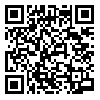Volume 7, Issue 3 (September 2025)
IEEPJ 2025, 7(3): 0-0 |
Back to browse issues page
Download citation:
BibTeX | RIS | EndNote | Medlars | ProCite | Reference Manager | RefWorks
Send citation to:



BibTeX | RIS | EndNote | Medlars | ProCite | Reference Manager | RefWorks
Send citation to:
Koochacki R, Sharafzadeh2 M H, Zare A. (2025). Incongruent Prosodic and Gestural Markers Enhance Iranian Children's Capability to Perceive Irony and Sarcasm. IEEPJ. 7(3),
URL: http://ieepj.hormozgan.ac.ir/article-1-1033-en.html
URL: http://ieepj.hormozgan.ac.ir/article-1-1033-en.html
1- PHD Student, Department of Linguistics, Marv.C., Islamic Azad University, Marvdasht, Iran.
2- Assistant professor, Department of Linguistics, Marv.C., Islamic Azad University, Marvdasht, Iran. ,h.sharafzadeh@iau.ac.ir
3- Assistant professor, Department of Linguistics, Marv.C., Islamic Azad University, Marvdasht, Iran.
2- Assistant professor, Department of Linguistics, Marv.C., Islamic Azad University, Marvdasht, Iran. ,
3- Assistant professor, Department of Linguistics, Marv.C., Islamic Azad University, Marvdasht, Iran.
Abstract: (591 Views)
Objective: This study examined whether incongruity between multimodal cues—specifically verbal content versus prosodic and gestural signals—enhances children’s ability to detect ironic and sarcastic intent. A further aim was to determine the developmental onset of this ability.
Methods: Participants were 44 children aged 5, 8, and 11 years. They completed an audiovisual irony-detection task that included six congruent prompts and six incongruent prompts, designed to contrast negative contexts with positive responses. Incongruent prompts were delivered in three prosodic-gestural conditions: (1) matching, (2) weakly mismatching, and (3) strongly mismatching. Accuracy in identifying irony and sarcasm was recorded across age groups and conditions.
Results: Children across all ages demonstrated significantly higher accuracy in the strongly mismatching condition than in the weakly mismatching and matching conditions. Similarly, performance in the weakly mismatching condition was superior to the matching condition, indicating that greater incongruity between verbal and emotional cues facilitated irony and sarcasm detection. A significant main effect of age was also observed: 11-year-olds outperformed 8-year-olds, who in turn outperformed 5-year-olds, revealing a clear developmental progression. Additionally, correct response scores varied significantly across the three prosodic-gestural cue conditions, with performance highest under strong mismatches.
Conclusions: Findings suggest that children’s ability to detect irony and sarcasm is strongly influenced by the degree of incongruity between verbal and emotional signals. This ability develops progressively with age, becoming more reliable by late childhood. The results underscore the importance of multimodal cues in pragmatic language development and the role of prosody and gesture in facilitating comprehension of nonliteral meaning.
Methods: Participants were 44 children aged 5, 8, and 11 years. They completed an audiovisual irony-detection task that included six congruent prompts and six incongruent prompts, designed to contrast negative contexts with positive responses. Incongruent prompts were delivered in three prosodic-gestural conditions: (1) matching, (2) weakly mismatching, and (3) strongly mismatching. Accuracy in identifying irony and sarcasm was recorded across age groups and conditions.
Results: Children across all ages demonstrated significantly higher accuracy in the strongly mismatching condition than in the weakly mismatching and matching conditions. Similarly, performance in the weakly mismatching condition was superior to the matching condition, indicating that greater incongruity between verbal and emotional cues facilitated irony and sarcasm detection. A significant main effect of age was also observed: 11-year-olds outperformed 8-year-olds, who in turn outperformed 5-year-olds, revealing a clear developmental progression. Additionally, correct response scores varied significantly across the three prosodic-gestural cue conditions, with performance highest under strong mismatches.
Conclusions: Findings suggest that children’s ability to detect irony and sarcasm is strongly influenced by the degree of incongruity between verbal and emotional signals. This ability develops progressively with age, becoming more reliable by late childhood. The results underscore the importance of multimodal cues in pragmatic language development and the role of prosody and gesture in facilitating comprehension of nonliteral meaning.
Keywords: Irony and sarcasm, Prosodic-gestural cues, Audiovisual task, Mismatching condition, Developmental pattern
Type of Study: Original |
Subject:
Evolutionary Psychology
Received: 2025/02/28 | Accepted: 2025/05/22 | Published: 2025/09/1
Received: 2025/02/28 | Accepted: 2025/05/22 | Published: 2025/09/1
Send email to the article author
| Rights and permissions | |
 |
This work is licensed under a Creative Commons Attribution-NonCommercial 4.0 International License. |






